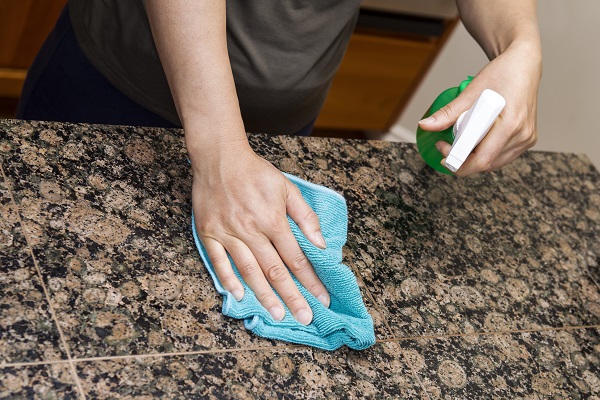Cleaning and Care Guide
Congratulations on acquiring a stunning stone benchtop for your kitchen surface. To ensure your benchtop retains its good looks, here is a care and maintenance guide to help you give your stone benchtop the love it deserves.
REGULAR CLEANING AND MAINTENANCE
Clean your top with a wet microfiber cloth and clean water. Take care when using acidic liquids, this include lemon juice, vinegars and red wine. These acids can eat into the sealants if not wiped off immediately and can stain your benchtop. It is recommended that you wipe off food and liquid spills as soon as possible by using a damp cloth.
DIFFICULT STAINS OR MARKS
As with any stone surface, if acidic, coloured or oil based products are left on your bench top for any period of time there is a chance of staining, discolouration or marking. If a spillage or mark of this type occurs, then clean it up with warm soapy water (containing a mild detergent) and a damp cloth.
Food, chewing gum, nail polish or paints stuck to the surface can be scraped off with a sharp blade. Any residual metal marks can be easily removed with a scratch free scouring pad, before washing and rinsing with water.
The use of non-PH neutral chemicals is prohibited. DO NOT USE OR SPILL bleach, caustic soda, Draino, oven cleaners, paint strippers or petroleum based products on your benchtop.
HEAT RESISTANCE
Placing very hot pans or dishes straight on to the benchtop could cause thermal shock to the stone, this is due to the rapid change in temperature. It is advisable to always use a heat pad or trivet underneath pots and pans, cooking appliances such as kettles, electric frying pans, crock pots and cooktop ovens.
REACTION TO KNOCKS
One of the characteristics that makes these surfaces stand out is their high resistance to knocks. However, avoid striking areas of the surface that, due to the design of fabrication, may be slightly weaker, such as pointed corners, fine edges and around the sink edge. Do not stand or put excess weight on any unsupported areas. Do not cut directly on your benchtop. Although resistant to scores and scratches, if its original appearance is to be preserved, the use of chopping boards is always advised.


